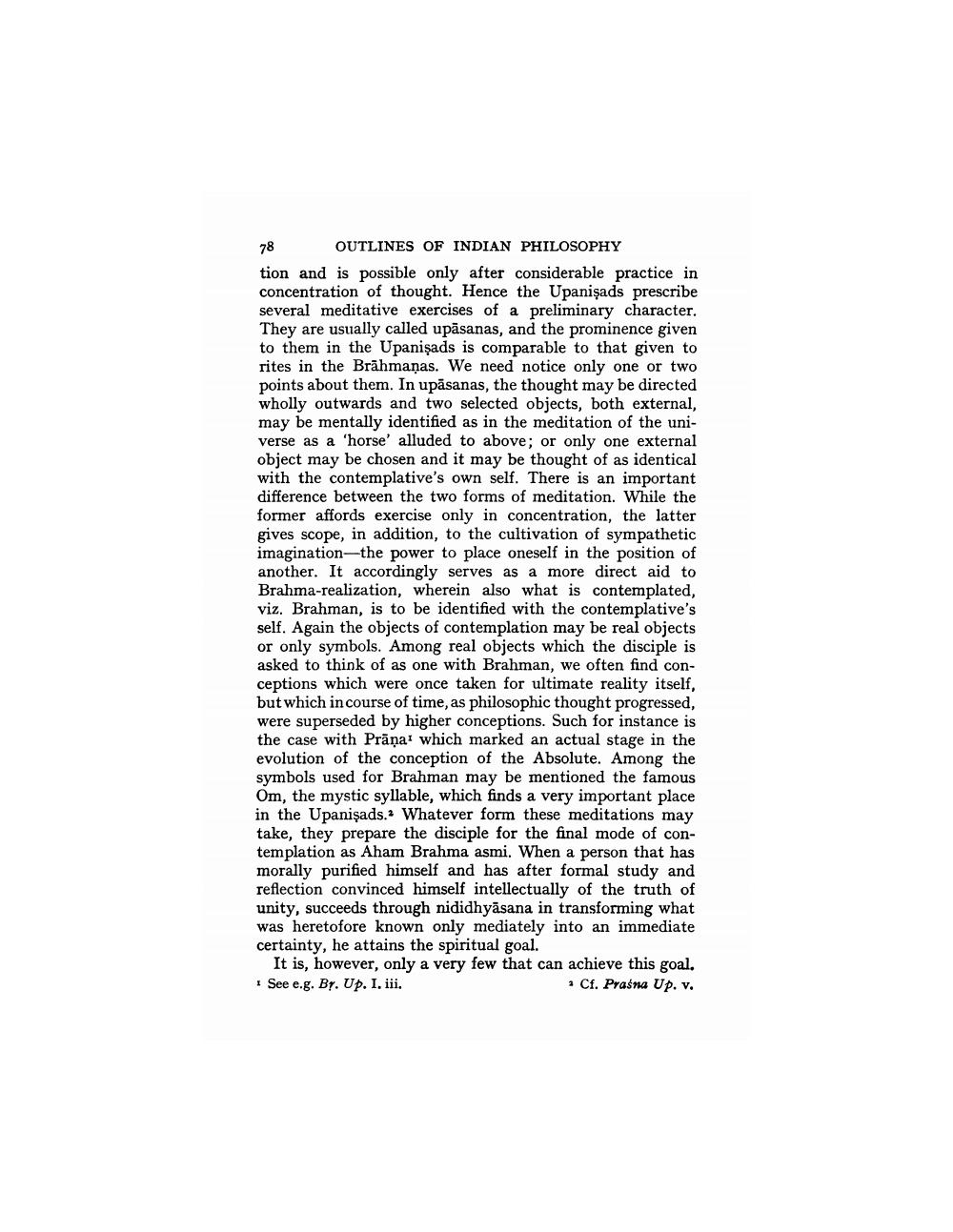________________
78
OUTLINES OF INDIAN PHILOSOPHY tion and is possible only after considerable practice in concentration of thought. Hence the Upanişads prescribe several meditative exercises of a preliminary character. They are usually called upāsanas, and the prominence given to them in the Upanişads is comparable to that given to rites in the Brāhmaṇas. We need notice only one or two points about them. In upāsanas, the thought may be directed wholly outwards and two selected objects, both external, may be mentally identified as in the meditation of the universe as a 'horse' alluded to above; or only one external object may be chosen and it may be thought of as identical with the contemplative's own self. There is an important difference between the two forms of meditation. While the former affords exercise only in concentration, the latter gives scope, in addition, to the cultivation of sympathetic imagination-the power to place oneself in the position of another. It accordingly serves as a more direct aid to Brahma-realization, wherein also what is contemplated, viz. Brahman, is to be identified with the contemplative's self. Again the objects of contemplation may be real objects or only symbols. Among real objects which the disciple is asked to think of as one with Brahman, we often find conceptions which were once taken for ultimate reality itself, but which in course of time, as philosophic thought progressed, were superseded by higher conceptions. Such for instance is the case with Prāņat which marked an actual stage in the evolution of the conception of the Absolute. Among the symbols used for Brahman may be mentioned the famous Om, the mystic syllable, which finds a very important place in the Upanişads. Whatever form these meditations may take, they prepare the disciple for the final mode of contemplation as Aham Brahma asmi. When a person that has morally purified himself and has after formal study and reflection convinced himself intellectually of the truth of unity, succeeds through nididhyāsana in transforming what was heretofore known only mediately into an immediate certainty, he attains the spiritual goal.
It is, however, only a very few that can achieve this goal. See e.g. Br. Up. I. iii.
1 Cf. Praśna Up. v.




